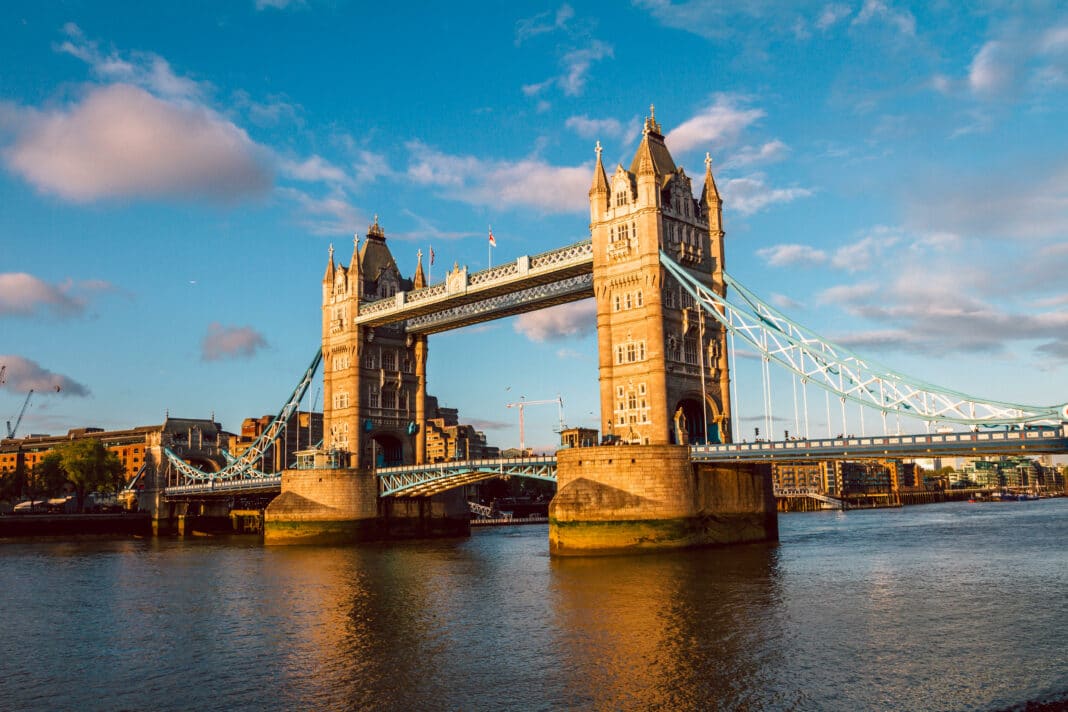Creativity flows through London’s veins. From its art schools to its advertising agencies, the city has built a reputation for turning ideas into cultural movements.
Over the past several decades, London’s creative identity has evolved through a constant process of reinvention. Today, it stands as a global centre for marketing, design, and innovation, attracting talent and brands from every corner of the world.
Design that defines
The visual language that emerged during the following decades continues to inspire everything from branding to digital interfaces today.
The punk movement in the late 1970s demonstrated how design could be both political and emotionally accessible. In the 1980s, corporate identity took the lead, with London agencies leading major rebrands for banks and airlines. Then came the 1990s, when the rise of Britpop and Cool Britannia reintroduced the world to London’s creative attitude.
Each era built upon the one before it. London has never stood still. It learned to adapt, absorb influences, and evolve its creative methods in tandem with technology and culture.
A global magnet for talent
London’s strength doesn’t come from a single creative discipline; it comes from the people who bring those disciplines together. The city has always drawn ambitious minds, from artists and filmmakers to coders and strategists. Its multicultural population fuels collaboration that few cities can match.
It’s no coincidence that international brands continue to set up partnerships with agencies based in the Big Smoke. The city’s creative workforce is both deeply skilled and globally minded. For any brand seeking a partner with cultural fluency, collaborating with a marketing agency in London provides an immediate connection to that network.
The digital renaissance
By the early 2000s, digital media began reshaping the industry. Many predicted that technology would flatten creativity, replacing craft with algorithms. London proved them wrong. The city embraced the shift, blending design thinking with digital innovation to create a new creative model.
Agencies began integrating technology into storytelling rather than treating it as a separate discipline. Interactive campaigns, viral content, and experiential design became hallmarks of London’s new era. The rise of digital platforms also levelled the playing field, allowing smaller creative studios to compete with established ones.
Start-ups flourished in areas like Shoreditch and King’s Cross, where converted warehouses were transformed into studios and co-working spaces. Collaboration became the norm, not the exception. Designers, filmmakers, and developers began sharing ideas, resulting in some of the most innovative digital campaigns of the last two decades.
Diversity as creative currency
What truly sets London apart today is its ability to change diversity as a design strength. The city’s cultural mix is not a side note; it’s the engine of innovation. Each community adds something distinct to the collective imagination, from visual style to storytelling rhythm.
This influence is evident everywhere: in typography that draws from multiple scripts, in music that blends genres, and in fashion that reinterprets heritage. The city’s creative output reflects its people, and that inclusivity gives London’s work universal appeal.
In global terms, this makes London more than a hub; it makes it a bridge. Campaigns built here often resonate with audiences across continents because they’re created by teams that understand multiple perspectives from the outset.
Creative education and infrastructure
London’s educational system has also played a considerable role. Institutions like Central Saint Martins, the Royal College of Art, and Goldsmiths have shaped generations of world-class designers, writers, and artists. They encourage experimentation over conformity, producing graduates who challenge norms rather than follow them.
Beyond education, the city offers the means to transform creative talent into successful businesses. From agency networks to freelance groups, there’s a well-established system that supports innovation. The proximity of global media, tech investors, and cultural institutions means ideas don’t just stay on the page; they find audiences quickly.
A city that never stops
From the swinging sixties to the digital age, London’s creative journey has been one of metamorphosis. Each generation redefines what creativity means. For international brands and professionals, London offers something rare: creativity rooted in heritage yet constantly reinvented for the future.
Whether it’s an independent studio in Hackney Wick or a global agency in Soho, the soul and heart are the same: ambitious, diverse, and daring enough to lead. The world looks to London not just for ideas, but for inspiration. And if history is any guide, that won’t change any time soon.




